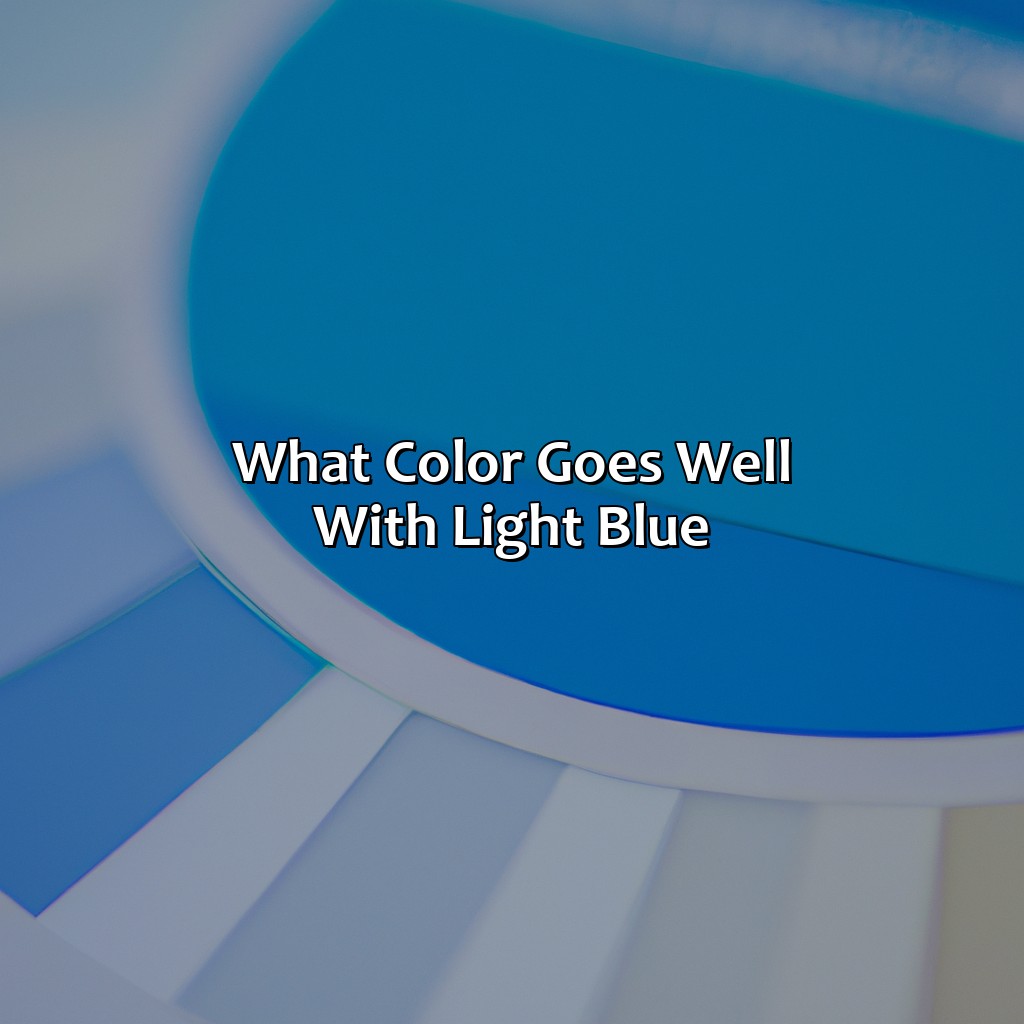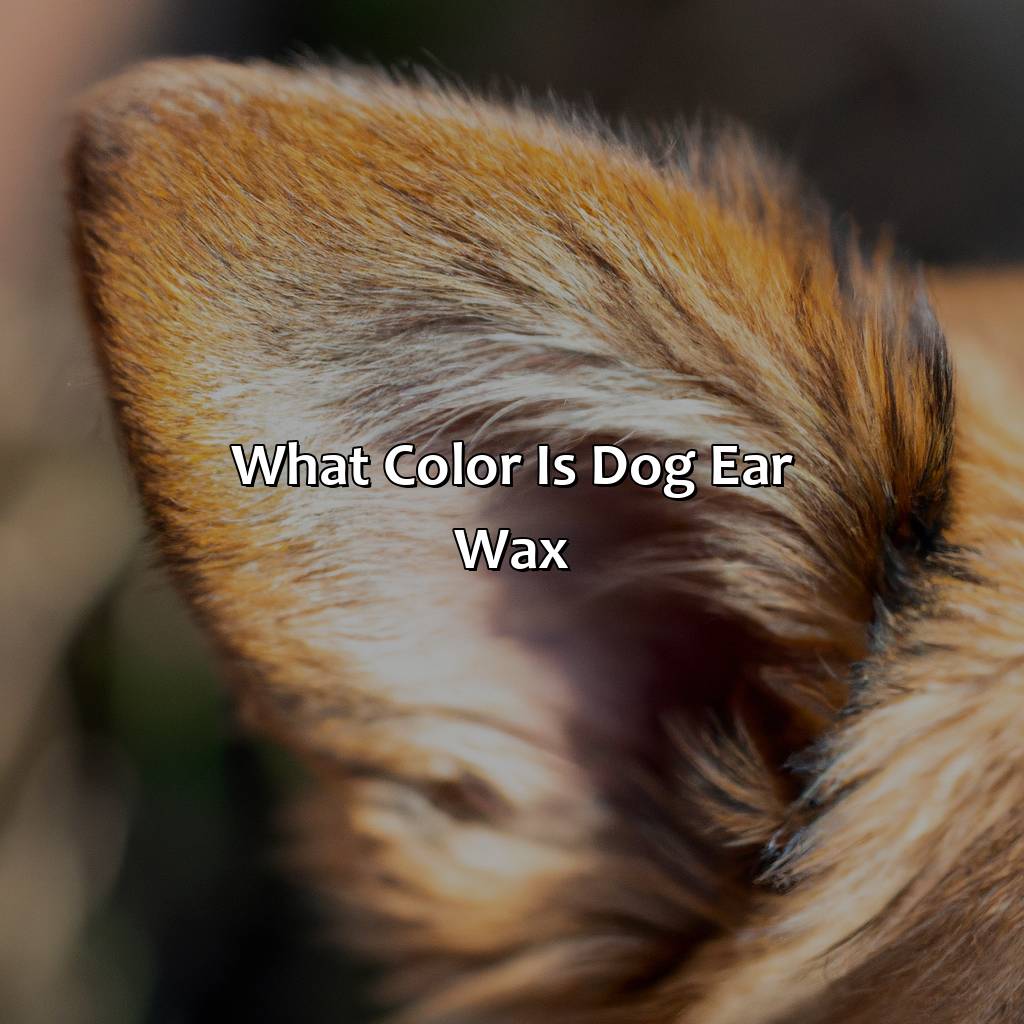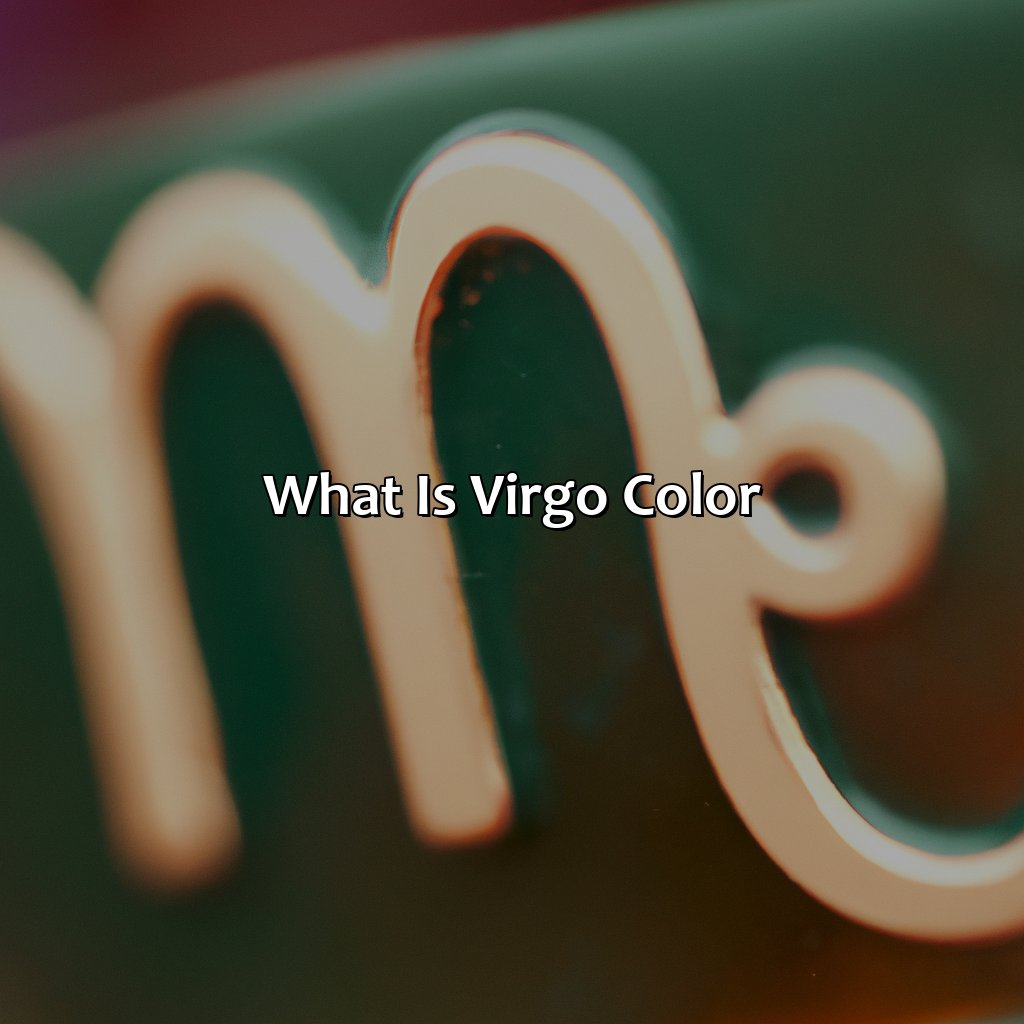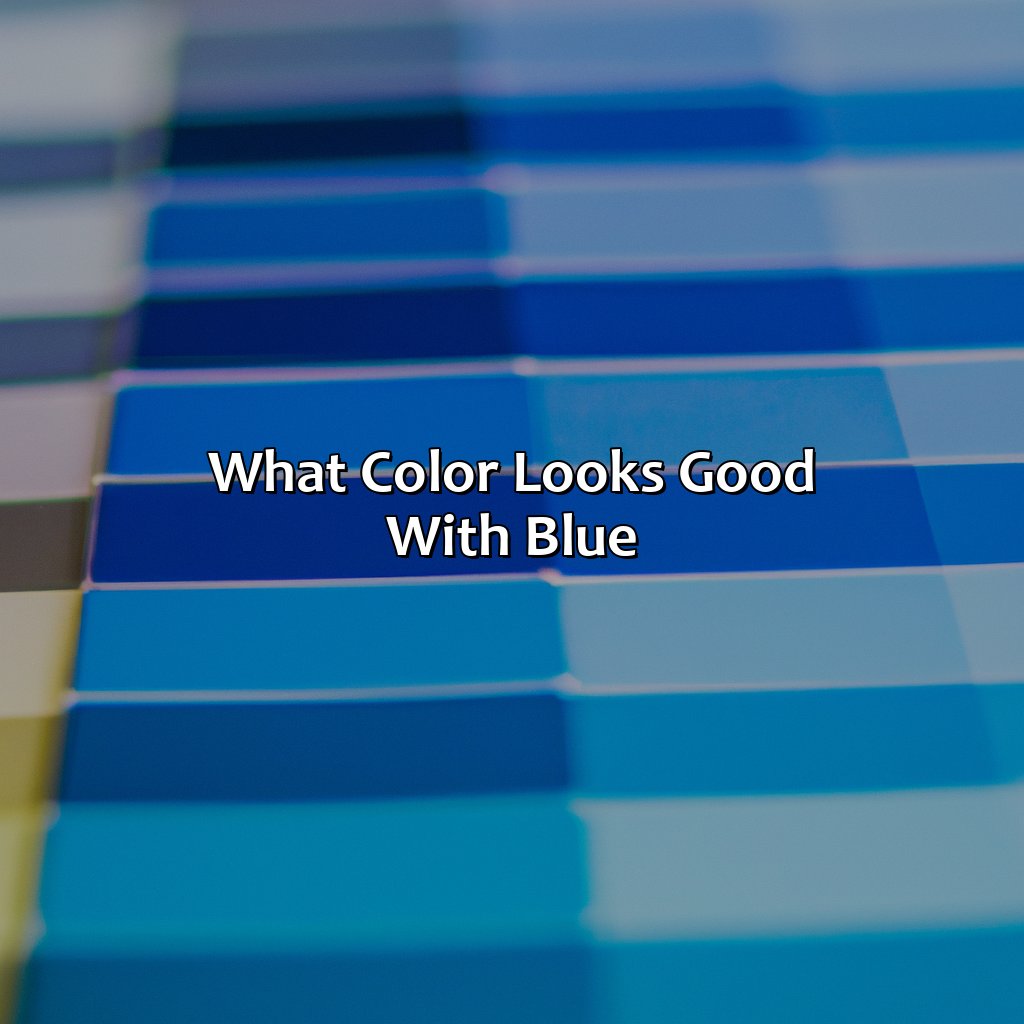Key Takeaway:
- Complementary colors for light blue include soft shades of pink and peach, rich shades of navy and royal blue, earthy tones like beige and gray, and warm colors like yellow and orange. These colors go well with light blue and create a harmonious color scheme.
- Avoid bold and neon colors, bright reds and pinks, and cool-toned greens when pairing with light blue. These color combinations can clash and create a dissonant color scheme.
- To pair light blue with other colors, experiment with color blocking, use a color wheel to find complementary hues, and look at nature for inspiration. These tips and tricks can help create beautiful and unique color combinations.
Colors that complement light blue
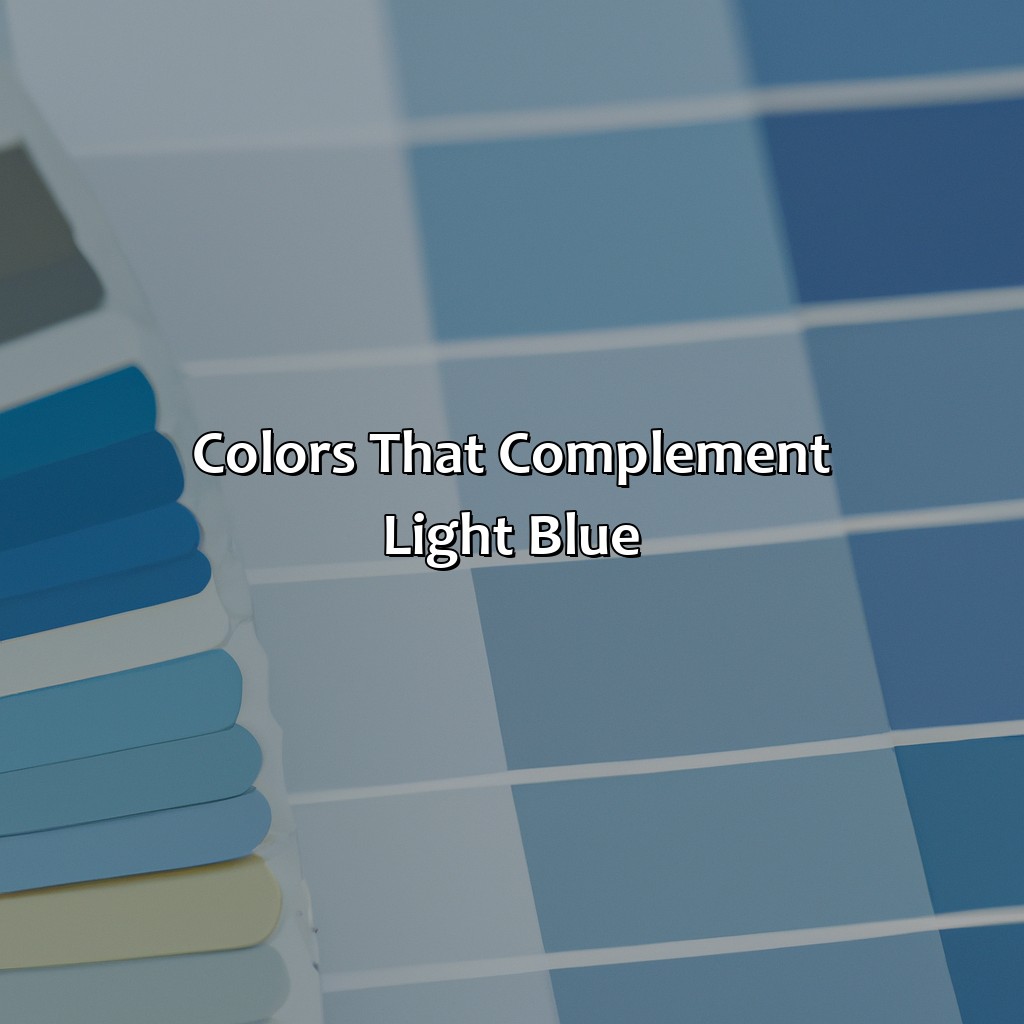
Photo Credits: colorscombo.com by Gabriel Flores
For the perfect colors to pair with light blue, look to the color wheel. It’s simple to make a light blue palette that stands out, once you know the principles of complementary colors. Soft pinks and peaches bring warmth. Deep navy and royal blue are sophisticated. Earthy beige and gray are calming. And yellow and orange bring sunshine.
Soft shades of pink and peach
Soft hues of pink and peach are perfect compliments to light blue, creating a harmonious and charming color scheme. These delicate shades provide a gentle contrast that adds warmth without overpowering the subtlety of the light blue. Using these colors together creates a serene and peaceful atmosphere, making it an ideal choice for interior décor.
The light blue and pink color scheme is not only calming but also creates a timeless look that never goes out of style. When combined with soft textures like velvet or linen, this color palette can create an elegant and sophisticated vibe. Alternatively, opting for pastel shades of peach can provide an alluring touch of femininity.
Pairing light blue with warmer tones such as peach often elicits feelings of comfort and calmness. The unusual combination brings in a unique charm to the overall ambiance that uplifts mood effortlessly.
According to Behr Paint Color Trends 2021, “This comforting palette includes shades of amber, clay [and] blush pink” making them great complements to interplay with different shades that work perfectly well with dynamic yet subtle light blue colors.
In summary, soft shades of pink and peach are versatile hues that complement light blue in creating soothing, whimsical schemes perfect for timeless personal and professional décors.
Pairing light blue with rich shades of navy and royal blue is like adding a touch of sophistication to your color palette.
Rich shades of navy and royal blue
Combining light blue with rich shades of navy or royal blue creates a stunning color scheme that exudes timeless elegance and sophistication. When paired, these colors can produce an eye-catching contrast that is perfect for formal events or professional settings. The navy and royal blues serve to anchor the lighter blue, providing depth and gravitas to the palette.
To further emphasize this striking color pairing, incorporate patterns or textures with both shades of blue. For example, using a light blue shirt under a navy blazer will create a visually interesting outfit. Additionally, wearing a dress that features a light blue top and royal blue skirt can make a unique statement.
Furthermore, consider incorporating metallic accents such as gold or silver into your outfit when wearing the light blue and navy/royal blue color scheme. This combination adds an extra level of glamour to any ensemble.
In summary, the light blue and navy/royal blue color scheme is a classic combination that is versatile for any occasion. Incorporating patterns, textures, and metallic accents can create an unforgettable look that will turn heads wherever you go.
Pairing light blue with earthy tones like beige and gray is like creating a soothing oasis in a desert of bad fashion choices.
Earthy tones like beige and gray
Light blue is a versatile color that combines seamlessly with various color schemes. The earthy tones like beige and gray are perfect companions for light blue, producing a calming and relaxing effect. The light blue and beige color scheme can create a delicate and sophisticated ambiance, while the light blue and gray color scheme offers a more contemporary look.
Beige is an excellent choice for pairing with light blue as it adds warmth to the overall aesthetic. A soft beige against the coolness of light blue creates a peaceful yet stylish atmosphere in any setting. Gray also provides neutral balance when combined with light blue, which can offer either warm or cool results depending on the tone of gray used.
To enhance the pairing of earthy tones with light blue, individuals should select materials that complement the colors’ subdued nature. Linen, wool, or cotton fabrics in beige or grey hues will work well with furniture or home decor pieces painted in pastel blues.
Pro Tip: For an inspired look utilizing earth tones like beige or gray with light blue, play around with textures like natural fibers because they exude comfort and simplicity while creating an intriguing contrast against the softer shade of light blue.
Pairing light blue with warm colors like yellow and orange creates a sunny and cheerful color scheme that will brighten up any room.
Warm colors like yellow and orange
Yellow and orange are warm colors that beautifully complement light blue. Yellow is a bright, cheerful color that enhances the coolness of light blue. Orange also works well with light blue, creating a vibrant and energetic look. When using these colors together, it’s vital to ensure they’re balanced so that they don’t overpower one another.
When considering a light blue and yellow color scheme, pastel yellows work well, such as lemonade or buttercup shades. These hues offer a calming effect while adding warmth and brightness to the palette. Bolder shades of yellow like mustard can add depth to the color combination when used as an accent.
Similarly, for a light blue and orange color scheme, muted oranges like apricot or terracotta create an elegant look when paired with pale blues in a backdrop or statement piece. Bright oranges work best when used sparingly to maintain balance between the two colors.
To incorporate these hues into your design effectively, consider using them in patterns or textures. You can also use accents such as pillows, paintings or curtains to enhance the space while keeping it subtle.
Historically speaking, orange was not always considered fashionable until overalls became popular in 19th-century America made from a bright shade called ‘Carrot Orange.’ Since then it grew in popularity among clothing designers worldwide in the 20th century.
Why pair light blue with bold and neon colors? It’s like mixing a library and a rave party.
Colors to avoid pairing with light blue
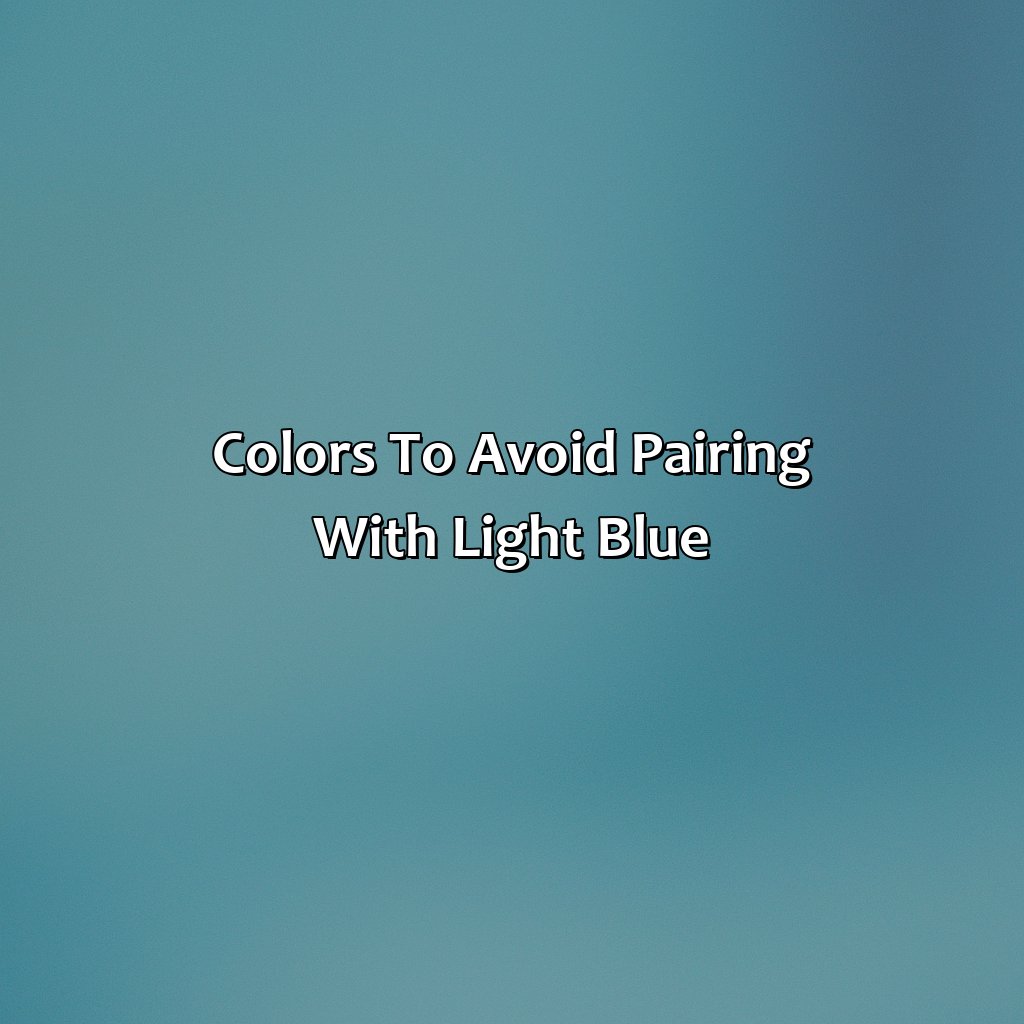
Photo Credits: colorscombo.com by Jeffrey Green
To keep light blue outfit or decor from clashing, think of the psychology and symbolism of the color. Bold, electric blue or hot pink could take away from the softness. Likewise, bright reds and pinks may give off a girly or child-like vibe. Instead, choose cool-toned greens to bring out the calming effects of light blue.
Bold and neon colors
Bright and striking hues that fall in the neon and bold color scheme should not be paired with light blue as they tend to clash. It is better to opt for colors that complement it instead of creating a jarring effect. Using neon colors can make the outfit look too busy and overwhelming.
Pairing light blue with bright and neon tones can result in a visually overwhelming outfit. It is important to find colors that complement rather than compete with light blue. Opting for softer hues such as pastel pinks or peach will create an elegant and subdued finish.
Unique details about this topic include the fact that although bold tones may seem like a good idea for pairing with Light Blue, they don’t usually work well together. Neon hues seem to overtake any pastel hue in sight, subsequently dwarfing the total outfit’s uniformity.
A story of caution would be upon a customer who purchased a green and pink accessory thinking it would help bolster their light blue jacket. The neon shades ended up clashing violently against the subdued nature of Light Blue, resulting in an undesirable result.
Pairing light blue with bright reds and pinks? Sorry, but I refuse to be responsible for any retina damage.
Bright reds and pinks
Bright Red and Pink: Colors to Avoid Pairing with Light Blue
Pairing light blue with bright reds and pinks may seem like a fun idea, but it can actually be tricky to pull off. These bold colors can clash with the softness of light blue, resulting in an overwhelming and unbalanced look. Instead of using bright reds and pinks, consider using softer shades like blush or dusty rose for a more cohesive look.
Furthermore, it’s important to note that the light blue and bright pink color scheme has become quite popular in recent years, but this pairing often works best when one color is used as an accent rather than being used equally with the other. The same goes for using a light blue and bright red color scheme.
Unique details that have not been covered already include the fact that adding metallic accents, such as silver or gold, to a light blue and bright pink color scheme can give it a modern edge. Similarly, pairing these colors with black can create a sophisticated look.
Pairing light blue with cool-toned greens is like mixing fire and ice – it just doesn’t work.
Cool-toned greens
Green colors that are cool-toned can be a challenge to pair with light blue. These shades of green have hints of blue and gray, creating a cool impression. Green is known to symbolize nature, health, and growth. In the context of fashion or home decoration, it adds an extra pop of color in any selection.
In the following table, possible green shades for combining with light blue have been listed:
| Shade of Cool-toned Green | Description |
| Olive Green | This natural tone focuses on peace and prosperity. |
| Teal Green | A refreshing balance between green and blue shades which pairs perfectly with light blue. |
| Mint Green | Soothing pastel shade that works well as an accent color alongside light blue. |
Moreover, try using contrasting patterns in your outfits or designs when incorporating light blue and green color scheme. Different geometric shapes add a playful touch; while stripes also create a strong visual impact.
Interestingly, ancient Egyptians believed that green represented joy, life after death, and rebirth since it was the color used to paint plants’ leaves in their art pieces. They also use green pigment for walls because moss grew naturally in temples.
Overall, cool-toned greens can bring out different sides of light blue’s versatility. It’s always good to experiment while keeping different styles in mind until you find the perfect match for your needs!
Pairing light blue with other colors is like playing a game of paint dress-up – experiment, mix and match, and don’t be afraid to break the rules.
Tips and tricks for pairing light blue with other colors

Photo Credits: colorscombo.com by Eric Harris
Light blue is a great primary color. To make the perfect combo, use some tips and tricks.
- Color block with black and white, or try lighter shades to create a classy balance.
- Use a color wheel to find complementary hues for a dynamic contrast.
- Getting ideas from nature is also a smart move for exterior house or front door colors.
Experiment with color blocking
Experimenting with Colors – An Alternate Approach
To add interest and excitement to your light blue outfits, mixing and matching different colors is a great way to go. One of the most popular ways to do this is by color-blocking. It’s a simple yet highly effective method that allows you to create eye-catching contrasts that turn heads.
Here’s how to experiment with color-blocking using light blue and complementary hues:
- Choose an inspiration piece or accessory that has both light blue and black color scheme or a light blue and white color scheme.
- Select a bold colored item, such as mustard yellow or hot pink, to pair with your light blue base.
- Add one more accent item in another complimentary hue, like baby pink or tan brown.
By involving these specific visual elements, you can achieve a look that is fresh, vibrant, and exciting.
Add some extra spice to your outfits with different colors and play around until you find your perfect match. As we all know, fashion should be fun!
Find your hue-mate: How to use color theory to complement light blue and create a stunning palette.
Use a color wheel to find complementary hues
Color theory suggests that certain colors complement each other, and one way to find the perfect match for light blue is by using a color wheel. This tool allows you to explore different hues and their relationship with each other.
To demonstrate how to use a color wheel, we can create a table where light blue is at its center. In the first column, we list the primary colors – blue, red, and yellow. In the second column, we add secondary colors – green, violet, and orange. Finally, in the third column, we include tertiary colors – think of shades like teal or magenta.
By pairing light blue with its complementary colors from this table, you can find stunning combinations that highlight different aspects of your outfit or design project. For example:
- Pairing light blue with orange creates an energetic and playful feeling.
- Green gives a refreshing vibe when paired with light blue.
- Mixing light blue with deep violet creates an elegant look.
Experimenting with the color wheel’s possibilities will allow you to unleash your creativity beyond what you thought was possible.
When using a color wheel as part of a creative process involving matching colors with light blue, keep in mind some tips:
- The complementary color should not be of equal intensity; otherwise, they will fight against each other instead of enhancing.
- If you prefer muted looks opt for analogous hues that are located adjacent on a color wheel.
- For monochromatic pairs maintain tone consistency; stick to either warm or cool-toned hues.
Finally, take inspiration from nature when looking for matching colors with light blue: forests have many olive greens and earthy browns while beaches feature sandy tans and coral pinks. Utilizing these natural palettes can help take your outfits or projects to the next level.
For instance, when designing romantic attires or weddings use peach florals intertwined with soft pale blues; this combination matches perfectly! Nature knows best when it comes to pairing light blue with exterior house colors and front door hues.
Look at nature for inspiration
Nature has a plethora of colors that can inspire the perfect complementary match for light blue. By observing natural landscapes, one can gain insight into the organic pairing of blue with green, brown, and even pink. Many homeowners use light blue as an exterior house color, and looking at the natural surrounding environment can help determine which front door color would complement the structure. In addition, plants and flowers serve as an excellent source of inspiration for accent colors to balance calmness with vitality. Overall, nature provides endless possibilities for finding the perfect shade to match light blue.
To achieve this organic look, consider selecting front door or accent hues found in nearby flora such as hydrangeas, lavender bushes, or dusty rose vines. Combining these colors creates harmony between man-made and natural elements of the environment. Additionally, one could observe how light behaves outdoors by studying sunrises and sunsets or clouds drifting across shades of blue sky to better understand how various hues interact in their natural state.
Another method is to take inspiration from coastal towns where light blues are featured prominently on buildings. Using anchor-like accents in contrasting oranges or yellows perfectly complements the dye while also providing vivid pops of texture against a peaceful backdrop.
Finally, those seeking unique pops of color could opt for a bold choice by layering outdoor accessories in rich jewel tones like emerald greens, sapphire blues or amethyst purples; as they will create drama without overwhelming the serene atmosphere that light blue creates.
Five Facts About What Color Goes Well With Light Blue:
- ✅ Neutral colors like white, beige, and gray complement light blue well and create a calming effect. (Source: The Spruce)
- ✅ Pastel shades like baby pink, lilac, and light yellow are great options for a soft, feminine look. (Source: HGTV)
- ✅ Darker shades like navy blue and forest green can add depth and sophistication to light blue. (Source: House Beautiful)
- ✅ Metallic shades like silver and gold can add a touch of glamour to light blue. (Source: Real Simple)
- ✅ Bright and bold colors like coral and orange can create a striking contrast with light blue. (Source: Elle Decor)
FAQs about What Color Goes Well With Light Blue
What colors go well with light blue?
There are several colors that complement light blue. Some of them include:
- White: It creates a clean, fresh look when paired with light blue.
- Grey: It provides a sophisticated, calming effect.
- Pink: It creates a delicate, feminine feel when paired with light blue.
- Yellow: It creates a cheerful, sunny combination.
- Orange: It creates a bold and vibrant contrast with light blue.
- Purple: It provides a soft and dreamy combination with light blue.
